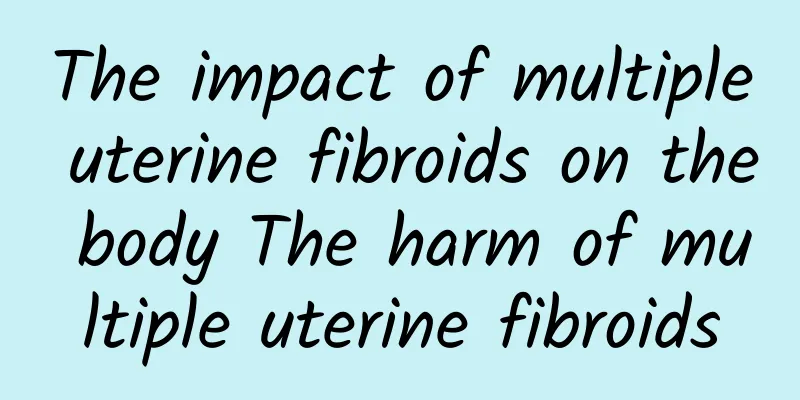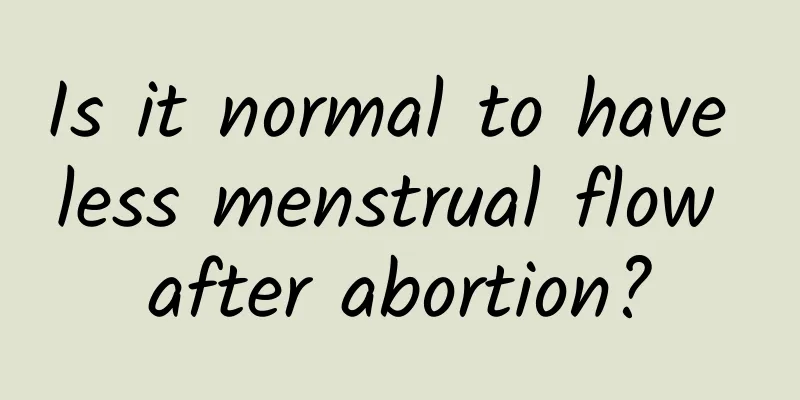The impact of multiple uterine fibroids on the body The harm of multiple uterine fibroids

|
Uterine fibroids are the most common tumors in the female reproductive organs, with a high incidence rate of about 30% in women aged 30 to 50, and an infertility incidence rate of 25% to 35%, which is becoming younger. Currently, the cause of uterine fibroids is still unclear. Uterine fibroids increase the area of the endometrium, hinder uterine contraction, affect blood circulation, and cause endometrial congestion, so the most typical symptom is excessive menstruation. Uterine fibroids can also cause increased vaginal discharge, pus-like, and accompanied by a peculiar smell. In addition, some larger fibroids can be felt. In the morning, lie flat on the bed with an empty stomach, bend your legs slightly, and relax your abdomen. Press with your hands to find larger lumps. The hazard analysis of multiple uterine fibroids is as follows: First, it causes pain, which manifests as lower limb edema or neuralgia, lower abdomen and back pain. Second, increased vaginal discharge. If the pelvic cavity is congested, endometrial edema will also cause increased vaginal discharge. Submucosal fibroids produce a large amount of bloody or odorous vaginal discharge. 3. Infertility. Experts say that submucosal fibroids can easily infect the endometrium, which is not conducive to the implantation of fertilized eggs. Giant multiple uterine fibroids can easily squeeze the interstitial part of the fallopian tube, blocking the passage of sperm. Uterine fibroids can expand the muscle wall or endometrial vein congestion, change the intrauterine environment, which is not conducive to the implantation of fertilized eggs and lead to infertility. 4. Miscarriage and dystocia. The incidence of miscarriage in pregnant women with uterine fibroids is 2 to 3 times that of pregnant women without uterine fibroids, and it is usually an incomplete miscarriage. During the delivery process, the fibroids affect the normal contraction of the uterus, and the delivery process can be prolonged; fibroids embedded in the pelvic cavity can block the birth canal and cause dystocia. |
<<: How to treat multiple uterine fibroids? What are the treatments for multiple uterine fibroids?
Recommend
What are the symptoms of cervical warts?
Cervical warts refer to a type of sexually transm...
How to check for cervical precancerous lesions
In life, there are many people suffering from cer...
Precautions before and after artificial abortion
Spring is the beginning of all things, giving peo...
Look here, man showing off his belly! 3 ways to build abdominal muscles
[Key Points]: Men have a lot of social engagement...
How to check pelvic inflammatory disease? Go to the hospital for examination
Nowadays, more and more women are affected by som...
What are the main symptoms that cause adnexitis?
Among the many gynecological diseases, adnexitis ...
What are the specific diagnostic criteria for irregular menstruation?
What are the specific diagnostic criteria for irr...
Is it normal to have a heavy second menstrual flow after miscarriage? What is the reason for heavy menstrual flow after miscarriage?
Is there anything you need to pay attention to af...
Hospitals that treat congenital absence of vagina
Congenital absence of vagina is caused by the sta...
What are the typical symptoms of vaginitis?
What are the symptoms of vaginitis? Vaginitis sym...
What are the causes of recurrent severe cervical erosion in women?
If severe cervical erosion is not treated in time...
Nursing experience of congenital absence of vagina
What are the nursing experiences for congenital a...
Abortion in teenage girls carries many risks
Abortion in teenage years can have a great impact...
What are the causes of adnexitis?
In the female internal reproductive organs, the f...
What if there is brown discharge after menstruation?
Women always experience a lot of discomfort in th...









